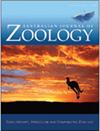澳大利亚蜥蜴是生殖生物学研究的杰出典范
IF 1
4区 生物学
Q3 ZOOLOGY
引用次数: 7
摘要
澳大利亚蜥蜴是一个分布在整个大陆的多样化群体,生活在各种各样的环境中。总之,它们在生殖形态、生理和行为方面表现出了显著的多样性,这在一般脊椎动物中具有广泛的代表性。澳大利亚蜥蜴表现出的许多生殖特征是在多个蜥蜴谱系中独立进化而来的,包括社会性、复杂的信号和交配系统、胎生和依赖温度的性别决定。因此,澳大利亚蜥蜴是检验关于生殖特征如何发挥作用和进化的假设的杰出模式生物,它们为与其他具有相似特征的动物进行比较提供了重要的基础。我们回顾了澳大利亚蜥蜴繁殖的研究如何有助于回答适用于一般动物的更广泛的进化和生态问题。我们关注生殖特征、过程和策略,这些都是当前研究的重要领域,包括求爱过程中的行为和信号;涉及交配、卵子生产和精子竞争的机制;筑巢和妊娠;性别决定;最后,胎生物种的出生。我们使用我们的回顾来确定从整体上考虑对这一研究主体的理解中出现的重要问题。最后,我们在每个主题中确定了澳大利亚蜥蜴非常适合生殖生物学家解决的其他研究问题。本文章由计算机程序翻译,如有差异,请以英文原文为准。
Australian lizards are outstanding models for reproductive biology research
Abstract Australian lizards are a diverse group distributed across the continent and inhabiting a wide range of environments. Together, they exhibit a remarkable diversity of reproductive morphologies, physiologies, and behaviours that is broadly representative of vertebrates in general. Many reproductive traits exhibited by Australian lizards have evolved independently in multiple lizard lineages, including sociality, complex signalling and mating systems, viviparity, and temperature-dependent sex determination. Australian lizards are thus outstanding model organisms for testing hypotheses about how reproductive traits function and evolve, and they provide an important basis of comparison with other animals that exhibit similar traits. We review how research on Australian lizard reproduction has contributed to answering broader evolutionary and ecological questions that apply to animals in general. We focus on reproductive traits, processes, and strategies that are important areas of current research, including behaviours and signalling involved in courtship; mechanisms involved in mating, egg production, and sperm competition; nesting and gestation; sex determination; and finally, birth in viviparous species. We use our review to identify important questions that emerge from an understanding of this body of research when considered holistically. Finally, we identify additional research questions within each topic that Australian lizards are well suited for reproductive biologists to address.
求助全文
通过发布文献求助,成功后即可免费获取论文全文。
去求助
来源期刊
CiteScore
2.40
自引率
0.00%
发文量
12
审稿时长
>12 weeks
期刊介绍:
Australian Journal of Zoology is an international journal publishing contributions on evolutionary, molecular and comparative zoology. The journal focuses on Australasian fauna but also includes high-quality research from any region that has broader practical or theoretical relevance or that demonstrates a conceptual advance to any aspect of zoology. Subject areas include, but are not limited to: anatomy, physiology, molecular biology, genetics, reproductive biology, developmental biology, parasitology, morphology, behaviour, ecology, zoogeography, systematics and evolution.
Australian Journal of Zoology is a valuable resource for professional zoologists, research scientists, resource managers, environmental consultants, students and amateurs interested in any aspect of the scientific study of animals.
Australian Journal of Zoology is published with the endorsement of the Commonwealth Scientific and Industrial Research Organisation (CSIRO) and the Australian Academy of Science.

 求助内容:
求助内容: 应助结果提醒方式:
应助结果提醒方式:


